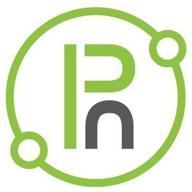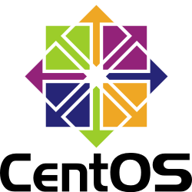Operating Systems
Unlocking Efficiency and Creativity: The Power of Operating Systems
When it comes to IT infrastructure, operating systems play a pivotal role in shaping the performance and capabilities of various devices and networks. Whether you're a developer seeking an open-source solution, a data center manager looking for the best option, or an IoT enthusiast exploring operating systems for embedded devices, understanding the unique characteristics and benefits of each system is crucial. In this article, we delve into the fascinating world of operating systems, discussing their diverse applications and highlighting key choices that cater to the needs of developers, data centers, and IoT deployments.
The Developer's Haven: Open-Source Operating Systems
In the realm of software development, innovation thrives on collaboration, customization, and flexibility. This is where open-source operating systems truly shine. Designed to empower developers, these systems provide unparalleled access to the underlying code, enabling users to modify and enhance them according to their specific requirements.
One prominent open-source operating system for developers is Linux. Its rich ecosystem and widespread community support have transformed it into a go-to choice for many software engineers. Linux offers an extensive range of distributions, such as Ubuntu, Fedora, and Debian, each tailored to different preferences and development environments. By embracing open-source principles, developers can leverage the collective wisdom of the community, accelerate their workflow, and create powerful, tailor-made solutions.
The Backbone of Data Centers: Choosing the Best Operating System
Data centers serve as the beating heart of modern enterprises, handling massive amounts of information and ensuring uninterrupted operations. To optimize their performance and efficiency, selecting the best operating system is paramount. With a plethora of options available, making an informed choice can be challenging, but the rewards are immense.
One standout operating system for data centers is FreeBSD. Known for its stability, scalability, and robust security features, FreeBSD has become a favorite among data center administrators. Its advanced networking capabilities, support for high-performance servers, and exceptional memory management make it an ideal choice for handling demanding workloads. With FreeBSD, data center managers can trust in a reliable and efficient foundation, allowing them to focus on their core objectives without compromising on performance or security.
Powering the Internet of Things: Operating Systems for Embedded Devices
The Internet of Things (IoT) has revolutionized the way we interact with our surroundings, connecting billions of devices and creating vast networks of intercommunicating systems. For IoT deployments, selecting the right operating system for embedded devices is paramount to ensure seamless connectivity, efficient resource utilization, and robust security.
A popular operating system in this domain is FreeRTOS. Designed specifically for resource-constrained embedded devices, FreeRTOS offers a real-time kernel that enables precise control over critical tasks. Its small memory footprint, low power consumption, and preemptive scheduling capabilities make it an ideal choice for battery-powered and low-cost devices. With FreeRTOS, IoT developers can leverage a reliable and optimized operating system to build smart, interconnected solutions that bring the IoT vision to life.
Operating systems play a crucial role in shaping the IT landscape, catering to the diverse needs of developers, data centers, and IoT deployments. Whether it's the open-source freedom for developers, the performance and reliability demanded by data centers, or the efficient connectivity required for IoT devices, choosing the right operating system can unlock a world of possibilities. By harnessing the power of these systems, individuals and organizations can optimize their infrastructure, unleash creativity, and propel themselves into a future of limitless potential.


5 Review
CloudReady is the highly secure, fast, and modern operating system that runs on almost any hardware. Launched in February 2015, CloudReady garnered immediate attention by giving budget-strapped schools a way to turn old, slow computers into fast, reliable devices that deliver the same experience as a Chromebook. Several years and more than 1.2 million…
Read more about this company

3 Review
Gentoo is an operating system based on either Linux or FreeBSD and can be customized for just about any application or need.


3 Review
SparkyLinux is a GNU/Linux distribution created on the testing branch of Debian. It features customized lightweight desktops (like E19, LXDE and Openbox), multimedia plugins, selected sets of apps and own custom tools to ease different tasks.




3 Review
BackBox is more than an operating system, it is a Free Open Source Community Project with the aim of promoting the culture of security in IT environment and give its contribution to make it better and safer. All this using exclusively Free Open Source Software, demonstrating the potential and power of the Community.


3 Review
OpenMandriva Association manages OpenMandriva Lxa GNU/Linux operating system. OpenMandriva is a worldwide community of passionate people about free software.

3 Review
UnixWare 7 Definitive is a software that provides advanced security features to help secure your information and protect your internal network from outside intrusion.


3 Review
Tails is a live operating system that you can start on almost any computer from a USB stick or a DVD.It aims at preserving your privacy and anonymity.


3 Review
Remix OS gives you access to over 2+ million Android apps and games. Most are free and can be installed with a single click from any Android app store of your choice.


3 Review
ReactOS is a free and open source operating system able to run application and drivers compatible with Windows.


3 Review
Slax is a modern, portable, small and fast Linux operating system with modular approach and outstanding design. It runs directly from your USB flash drive without installing, so you can carry it everywhere you go in your pocket.


3 Review
Xubuntu is a community developed operating system that combines elegance and ease of use.


3 Review
Netvisor is a virtualized Network Operating System (NOS) that provides a best-in-class layer 2 and layer 3 networking foundation, distributed fabric intelligence and virtualizes the switch hardware, similar to how VMware virtualizes a bare metal server.


3 Review
CopperheadOS is a secure and privacy-minded Android for use in everyday communications


3 Review
An independent, partner friendly operating system that fosters innovation. It's unlike what you're used to. But once you get the hang of the gesture based Sailfish OS, you'll never want to go back. The highly adaptive Sailfish OS contains Open Source Software building blocks, welcoming collaboration or simply, free-time hacking.


3 Review
Neptune is a GNU/Linux Distribution for desktops based fully upon Debian 7.0 ('Wheezy'), except for a newer kernel and some drivers. It ships with a modern KDE Plasma Desktop with its main view on a good looking multimedia system which allows for getting work done.


3 Review
Mageia community project develops and maintains a Free Software, GNU/Linux-based operating system for PCs and servers, for developers, businesses and individuals.


3 Review
CentOS is an Enterprise-class Linux Distribution derived from sources freely provided to the public by a prominent North American Enterprise Linux vendor.
- An open-source operating system for developers refers to a system that provides developers with access to the underlying source code, allowing them to modify and customize it according to their needs. One popular example is Linux, which offers a range of distributions tailored to different development environments.
- The best operating system for data centers depends on various factors, but FreeBSD stands out as a top choice. FreeBSD is known for its stability, scalability, and robust security features. It offers advanced networking capabilities, support for high-performance servers, and exceptional memory management, making it an ideal option for handling demanding workloads in data center environments.
- An operating system for embedded devices in the Internet of Things (IoT) refers to a system specifically designed to power and manage interconnected IoT devices. FreeRTOS is a popular choice in this domain. It offers a real-time kernel, small memory footprint, low power consumption, and preemptive scheduling capabilities, making it suitable for resource-constrained and low-cost IoT devices.

